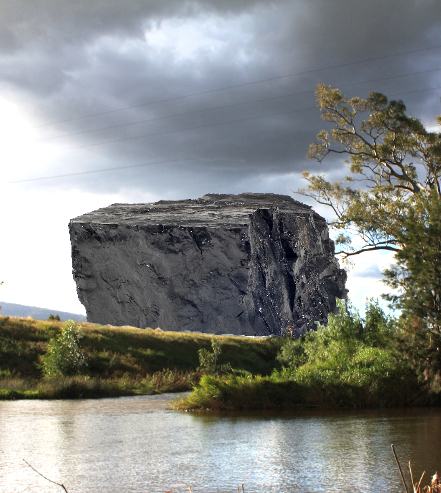Water worries whitewashed in quest for Shenhua
 A former member of the expert committee behind the approval of the Shenhua Watermark coal mine says it comes with big risks to water supplies.
A former member of the expert committee behind the approval of the Shenhua Watermark coal mine says it comes with big risks to water supplies.
Jim McDonald is a former member of the Federal Government’s Independent Expert Scientific Committee (IESC), serving from 2012 to 2014 during the first assessment of the Watermark mine on the Liverpool Plains in New South Wales.
He is also a farmer, former chair of the Namoi Catchment Management Authority, member of the Namoi Groundwater Ministerial Taskforce and the NSW Groundwater Adjustment Advisory Committee.
In an interview this week, McDonald said the mega-mine’s potential effects on underground water created “huge risks” and were “always open to creating irreversible impacts”.
He said the government’s water trigger approval – which came before a detailed water plan was even submitted - is “backwards”.
Environment minister Greg Hunt approved the $1.2 billion open-cut coal mine on a ridge above prime agricultural land after the second IESC assessment of the Watermark mine.
The green light came with the conditions that mining must stop if agricultural water supplies are affected, and the miner must replace any water loss.
But given that Shenhua has not actually presented a full water management plan, there is concern that the protections will not go far enough.
Mr Hunt has promised to refer the water plan to the expert committee, if it ever appears.
“Whilst minister Hunt has done a good thing in seeking [IESC] advice on the water management plan, the process is still backwards and the question has to be asked – if the foundations are wrong or uncertain in the first place, it will take an extraordinary water management plan to provide confidence, including the determination of the triggers that will be designed to stop harmful or irreversible impacts,” McDonald told reporters for The Guardian.
“Dealing with uncertainty as you go along with groundwater, at such scale as this, creates huge risks and is always open to creating irreversible impacts. This is still an analysis of risk and the modelling is not a statement of fact as some claim. The IESC advice portrays these risks and uncertainties.”
The disturbance area for the proposed mine covers a staggering 4,084 hectares, and it will be built next to the Mooki river; a major tributary to the Namoi catchment.
The minister claims to have based his decision on the second IESC assessment, but appears not to have paid much attention to the experts’ doubts about surface, groundwater monitoring, management responses and lack of information.
“The key potential impact associated with the proposed project is change to groundwater pressure and/or level within the Upper Namoi Alluvium groundwater resource,” the IESC assessment says.
The experts listed a range of needs that have not been addressed by Shenhua, including:
- a targeted monitoring program
- higher-definition numerical groundwater modelling
- identification and assessment of potential impacts to water-dependent ecosystems
- assessment of local-scale cumulative impacts
- long-term impacts associated with what is left of the land when mining is over
“Models are becoming more sophisticated and knowledgeable however they are not without their faults and all models are made from objective and subjective assumptions and data,” McDonald said.
“Objective data generally comes from monitoring, drilling, etc. Subjective data comes from expertise and the amount of money available to gather objective data.”
Shenhua Watermark project manager Paul Jackson defended the planning in an interview with the ABC.
“The minister and the IESC have both confirmed impacts on groundwater will be negligible and can be managed during operations with strict conditions,” Jackson said.
“We are confident management plans can be developed which comply with the strict operating conditions and satisfy the IESC and minister.”
“The overburden from the west pit fills in the south pit and by nature of that it means that there won’t be any final void near the black soil plains and that also recharges the aquifers over the longer term.”
McDonald said Jackson’s comments suggested a connection between the mine and the aquifers, which could create contamination and unknown water loss.
“The first issue, that has already been identified by the IESC – that as rain moves through the overburden that is infilled into the pit [it] will liberate chemicals from the disturbed rock,” McDonald said.
“These dissolved chemicals will then move with the water, and as Mr Jackson says ‘recharges the aquifers over the longer term.
“Second, the logical progression of what Mr Jackson said forms the highest risk as outlined by all from the beginning.
“If the water in the pits will recharge the aquifers over the longer term it means that there must be a connection from the pits to the aquifers for this to occur.
“Conversely, if that connection is there after the mine, it must be there before the mine, allowing water to move out of the aquifers into the pits if there is a differential pressure head, and as we know there will be due to a height difference,” he said.
The NSW government has the final development decision over whether the Watermark mine goes ahead, and is expected to make new announcements soon.








 Print
Print